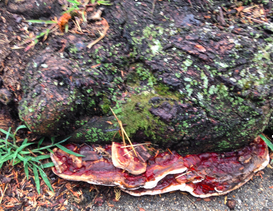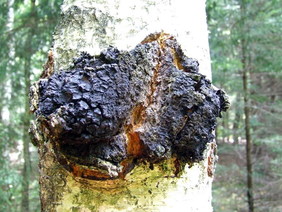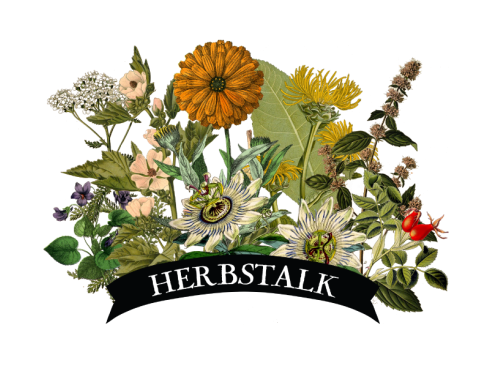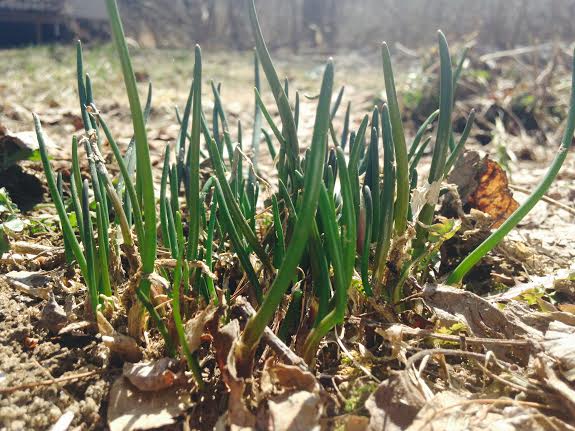|
contributed by Brendan Kelly
Today's post includes two videos created by one of our wonderful teachers, Brendan Kelly. He is the author of "The Yin and Yang of Climate Crisis", and in these short video clips he talks about the important connection between personal and ecological health. You can learn more about his book here, and see the details of his class here, Global Warming & Internal Inflammation, which will be offered at Herbstalk on June 3rd. Part I:

Brendan Kelly has a master’s degree in acupuncture and teaches about Chinese medicine at schools, colleges, universities and conferences around the country. He is a faculty member at Johnson State College in VT and the Academy for Five Element Acupuncture in FL. He has 20 years experience in western herbs, with 12 years in acupuncture and Chinese herbal medicine. He practices acupuncture and Chinese and western herbal medicine full time at the clinic he co-founded, Jade Mountain Wellness, in Burlington, VT. In 2015 he published his first book "The Yin and Yang of Climate Crisis" which presents the deeper, root causes of our warming planet and its connection to our personal and collective health.
by Brendan Kelly
With the western diagnosis of Lyme disease, what can seem like separate and confusing symptoms can be understood as the body's response to inflammation. In this video I discuss Chinese medicine's understanding of the different levels of this inflammatory response, and how it can contribute to the sometimes seemingly difficult-to-treat aspects of Lyme's, including neurological conditions. 
Brendan is an herbalist of 22 years and has has been practicing acupuncture and herbal medicine full-time for 12 years. He currently practices at the clinic he co-founded in Burlington, VT, Jade Mountain Wellness. He is also on the faculty at Academy for Five Element Acupuncture and is an adjunct professor at Johnson State College in Vermont. Brendan writes and teaches about the connection between personal, societal and environmental well-being, including the connection between climate change and Chinese medical thought and diagnosis. His book, The Yin and Yang of Climate Crisis, looks at the underlying causes of our warming planet from the perspective of Chinese medicine.
by Patrice Green Fall is a time to traditionally hunt and harvest mushrooms, and an appropriate time to learn more about a specific group - the medicinal mushrooms. Specifically, let's take a closer look at Reishi and Chaga.  Reishi: (Red Reishi / Ganoderma lucidum / Ling Zhi) Known as the King of all medicinal mushrooms, Reishi is well known for its immune-enhancing properties. An herbal adaptogen, Reishi's goal is to restore the body to homeostasis. Safe to take daily over a long period of time, Reishi is one of the most revered herbs in Traditional Chinese Medicine, earning it the nickname The Mushroom of Immortality. Known to help balance the endocrine system, Reishi helps with thyroid disorders. A powerful Shen tonic, Reishi has a profound affect on the nervous system, calming the spirit and helping the mind to focus. Reishi grows on decaying trees, preferring maple. Not recommended for use in conjunction with chemotherapy or other treatments designed to reduce the immune system, Reishi is particularly suited to helping re-build the body, mind and spirit post-treatment.  Chaga: (Inonotus obliquus) Chaga grows on birch trees and can be found in cold climates over most of the world. Long known as a folk remedy to the people of Siberia, Chaga is quite unique in its appearance, looking more like a chunk of tree bark than what one would normally think of as a mushroom. It is brown with blackened outer surface, much like charcoal or like it has been exposed to flames, but not completely burned. In other countries and cultures, Chaga is known as a powerful anti-tumor and anti-carcinogenic remedy, as well as a longevity tonic. Like Reishi, it is adaptogenic. Chaga is also a powerful anti-oxidant. In the human body there is a group of enzymes responsible for protection against free radicals and random oxidation called SuperOxide Dismutases, or SOD. As we age, our levels of SOD decrease. Chaga tea is known to stimulate our body's own production of SOD. Chaga and Turkey Tails in combination often offer relief to those undergoing cancer treatments. I was first introduced to the benefits of chaga when my mother was undergoing treatment for lung cancer. After vetting the herbs with the doctors at Dana Farber's Zakim Center, she began a daily habit of drinking three to four cups of chaga and turkey tails tea. Her doctors were amazed by how well she responded to treatment. Her tumor continued to progressively reduce until it disappeared. She did have a recurrence after stopping the tea for several months. However, she resumed her chaga regimen, in conjunction with acupuncture and has been cancer free for over 15 months. Recently my father, who has had pre-cancerous prostate issues for several years, went for a check up. He has also been enjoying the tea along with my mother. His physician was amazed that his PSA levels were normal for the first time in years. Is it the chaga? I don't know. I do know that my dad will be 90 in a few weeks and still has a spring in his step. Chaga normalizes blood pressure and cholesterol levels, optimizes the immune system, is both anit-inflammatory and anti-viral. A wonderful source of further information about this powerful medicinal mushroom can be found here. As always, consult your physician before taking any supplements. If you're interested in learning more about Reishi, Chaga and other medicinal mushrooms, I recommend reading anything written by the amazing Paul Stamets.
by Jade Alicandro Mace
Cleansing in the spring is a familiar and popular subject. But what about the concept of harmonizing with the spring? Traditional Chinese Medicine (TCM), and especially Chinese 5-Element Theory, provides us with a beautiful framework for understanding the spring and its energetics. When we’re attuned with the natural influences of this season, we can more easily tap into the rich gifts it has to offer. First, a little background. In TCM each season corresponds with an Element and an Organ System. The spring is associated with the Wood Element and the Chinese Liver-Gallbladder organ system (different from our anatomical liver and gallbladder!) and meridians. Understanding this organ/element pair and its associations is a great place to start when it comes to harmonizing with the spring. Keywords and phrases for the Liver-Gallbladder/Wood Element/Spring: Upwards moving energy, yang, growth, clear vision and purpose, decisiveness and decision-making, ambition, hopefulness, starting new projects, productivity Sounds just about right, doesn’t it? |
Archives
November 2023
Categories
All
|



 RSS Feed
RSS Feed